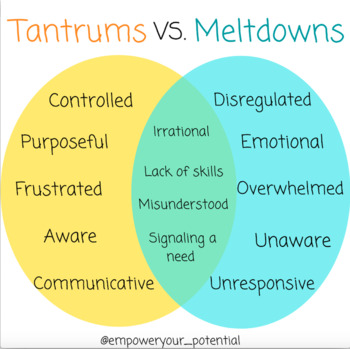Traveling with young children can be an exciting adventure, but it also comes with challenges—especially when toddler tantrums strike. Changes in routine, unfamiliar environments, and long hours on the road or in the air can trigger emotional outbursts, making the journey stressful for both parents and little ones. Understanding the causes of a childhood tantrum and learning effective ways to manage them can help ensure a smoother, more enjoyable travel experience. In this guide, we’ll explore practical tips to keep your toddler calm and make traveling a stress-free experience for the whole family.
1. Dealing with Toddler Tantrums and Meltdowns While Traveling:
Children thrive on routine, and disruptions caused by travel can lead to emotional outbursts. To reduce toddler tantrums while traveling, consider these strategies:

- Stick to regular nap and meal times to prevent irritability.
- Bring comfort items like a favorite toy or blanket.
- Plan breaks in long journeys to allow movement.
- Use distractions like books, snacks, or interactive games.
By preparing in advance, you can reduce the likelihood of tantrums.
2. Tantrum or Meltdown: How to Identify the Difference:
Not every outburst is the same. Understanding whether it’s a tantrum or meltdown helps in choosing the right response:
- Tantrums happen when a child is denied something they want. They may stop if they get attention or a distraction.
- Meltdowns occur when a child is overwhelmed by their environment. Unlike tantrums, they don’t respond to reasoning or distractions.
Recognizing the difference can help parents manage their child’s behavior effectively.

3. Is Locking a Child in a Room During a Tantrum a Good Idea?
Some parents may wonder if isolating their child is the best way to handle toddler tantrums out of control. However, experts caution against locking a child in a room during a tantrum. Instead, try:
- Allowing a safe space where they can calm down.
- Staying nearby to offer comfort when they are ready.
- Using a calm and reassuring tone to help them regain control.
Locking a child away can increase their distress and fear.

4. Why Yelling at a Toddler During a Tantrum Makes Things Worse:
Yelling at a toddler during a tantrum often escalates the situation rather than resolving it. Instead of shouting:
- Take deep breaths to stay calm.
- Speak in a soft, firm voice.
- Use simple words to acknowledge their feelings.
- Offer a hug or comfort item once they calm down.
Maintaining a peaceful approach helps de-escalate tantrums faster.
5. Struggling to Cope with Toddler Tantrums? Try These Techniques
If you’re struggling to cope with toddler tantrums, remember that emotional regulation takes time to develop. Parents can help by:
- Setting clear expectations and boundaries.
- Modeling calm behavior for children to imitate.
- Using positive reinforcement when they express emotions appropriately.
Seeking support from parenting groups or experts can also provide valuable insights.
6. Should I Let My Toddler Cry Out a Tantrum?
Parents often ask, “Should I let my toddler cry out a tantrum?” While it’s okay to allow some crying, complete ignoring can be harmful. Instead:
- Ensure your child is safe and not in distress.
- Offer comfort once they are calm.
- Validate their feelings without giving in to demands.
A balance between acknowledging emotions and teaching self-regulation is key.

7. Physically Restraining a Child During a Tantrum: Is It Safe?
If a child is at risk of harming themselves or others, physically restraining a child during a tantrum may be necessary. However, this should be done gently and only when required.
Safer alternatives include:
- Holding them in a secure hug to prevent harm.
- Redirecting their focus with soothing words.
- Removing dangerous objects from their surroundings.
Always prioritize safety while ensuring children feel supported.
Conclusion:
Managing toddler tantrums out of control can be overwhelming, especially while traveling. With patience, preparation, and a calm approach, parents can turn stressful moments into learning experiences. If tantrums persist or become extreme, seeking professional advice may be helpful.
By applying these strategies, you can make travel smoother and more enjoyable for the entire family.
FAQS:
How do you handle tantrums and meltdowns?
Stay calm, acknowledge your child’s feelings, and provide a safe space for them to express emotions. Use distractions, deep breathing techniques, or comforting items to help them self-regulate. Avoid yelling or punishment, as this can escalate the situation.
How do I stop tantrums when leaving places?
Give a countdown before leaving, offer a fun transition (e.g., “Let’s race to the car!”), and validate their feelings. Having a small reward or engaging activity planned for after departure can also help ease resistance.
What is the most effective intervention for tantrums?
The best approach is staying calm, setting clear boundaries, and teaching emotional regulation. Acknowledge their emotions, redirect attention, and reinforce positive behaviors with praise or rewards.
How do you calm an extreme tantrum?
Ensure your child is safe, speak in a soothing voice, and avoid reacting with frustration. Try gentle physical comfort, breathing exercises, or a quiet space to help them cool down. If needed, give them time to regain control before discussing their emotions.
External Resources:
Centers for Disease Control and Prevention (CDC) – Positive Parenting Tips
https://www.cdc.gov/ncbddd/childdevelopment/positiveparenting/toddlers.html

Empowering parents to raise happy, confident kids. Get practical parenting tips and advice on our blog, Smart Parent Guides.
